
Browse an alphabetical list of photographs. These historical images portray people, places, and events before, during, and after World War II and the Holocaust.
<< Previous | Displaying results 776-800 of 2641 for "Photo" | Next >>
Four of Norman's sisters, the maid, and Norman's mother, Esther, do laundry in the yard of their home. Kolbuszowa, Poland, 1934.
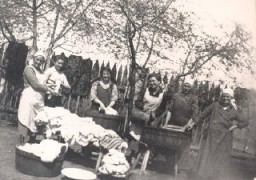
In 1942, seven-year-old Inge Auerbacher was deported with her parents to the Theresienstadt ghetto. She brought along this doll, named “Marlene” after German actress Marlene Dietrich, which her grandmother had given her. It would remain with Inge throughout her three years of imprisonment in the ghetto.
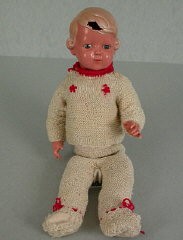

Displaced persons (DPs), Lusia Gliklich (left) and Andzia Dell, stand beside the sign in front of the Düppel Center DP camp, also called Schlachtensee.
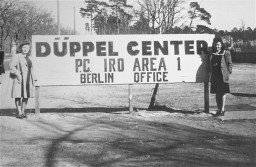
Dr. Fritz Klein stands among corpses in a mass grave at Bergen-Belsen, after the liberation of the camp. He was required to assist in the burial of inmates who died there. Klein was a camp doctor at both Auschwitz and Bergen-Belsen. Germany, after April 15, 1945.

Dr. Joseph Jaksy, who rescued 25 Jews during the war. He provided them with hiding places, money, medicine and forged identification papers. Jaksy was named "Righteous Among the Nations." Czechoslovakia, prewar.
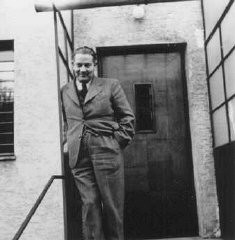
Portrait of Dr. Mohamed Helmy. Helmy was an Egyptian physician living in Berlin. He worked together with Frieda Szturmann, a local German woman, to help save a Jewish family.
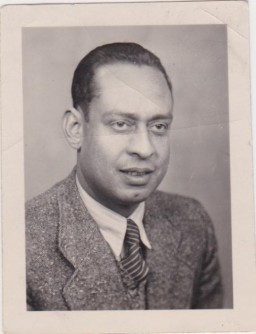
Dr. Mohamed Helmy and his wife, Emmi Ernst. During the Nazi era, they were forbidden from marrying because Dr. Helmy was not an Aryan. They were finally able to marry after the end of World War II.
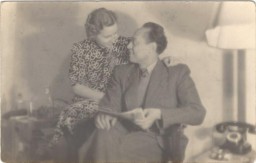
Dr. Robert Ritter and Eva Justin examine a young boy interned in a Zigeunerlager (“Gypsy camp”). Cologne, Germany, c. 1937-1940. During the Nazi era, Dr. Robert Ritter was a leading authority on the racial classification of people pejoratively labeled “Zigeuner” (“Gypsies”). Ritter’s research was in a field called eugenics, or what the Nazis called “racial hygiene.” Ritter worked with a small team of racial hygienists. Among them were Eva Justin and Sophie Ehrhardt. Most of the people…

Dr. Robert Ritter talks to several residents in a Zigeunerlager ("Gypsy camp"). Hamburg, Germany, 1940. During the Nazi era, Dr. Robert Ritter was a leading authority on the racial classification of people pejoratively labeled “Zigeuner” (“Gypsies”). Ritter’s research was in a field called eugenics, or what the Nazis called “racial hygiene.” Ritter worked with a small team of racial hygienists. Among them were Eva Justin and Sophie Ehrhardt. Most of the people whom Ritter studied and…
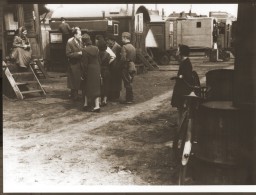
A dress worn by hidden child in Baarn, the Netherlands. The dress was donated to the United States Holocaust Memorial Museum in 2002 by Vera Waisvisz-Reiss.
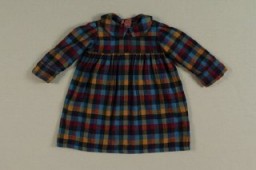
A farmer and his sons walk in the face of a dust storm. Cimarron County, Oklahoma. 1936
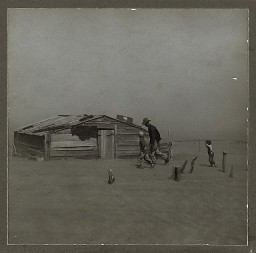
Dutch Jews who have recently arrived in the Theresienstadt ghetto. Czechoslovakia, February 1944.
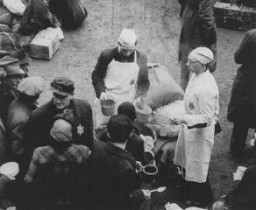
Semmy Woortman-Glasoog with Lientje, a 9-month-old Jewish girl she hid. Woortman-Glasoog was active in a network which found foster homes, hiding places, and false papers for Jewish children. She was later named "Righteous Among the Nations." Amsterdam, the Netherlands, between 1942 and 1944.

Dutch Seventh-day Adventist Johan Weidner headed the rescue organization "Dutch-Paris," which smuggled Jewish refugees into Switzerland and Spain. France, ca. 1940.
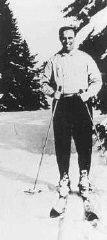
A man works outside his family's dwelling in a Roma (Gypsy) encampment in the city of Haarlem. The Netherlands, October–November 1940.
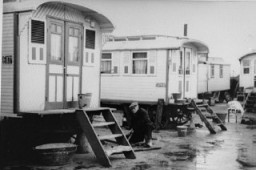
An early view of the Dachau concentration camp. Columns of prisoners are visible behind the barbed wire. Dachau, Germany, May 24, 1933.
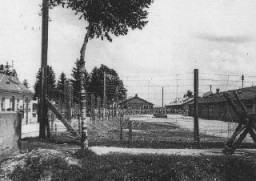
Units of a German armored division on the eastern front in February 1944. Soviet forces, largely on the offensive since the battle of Stalingrad, pushed German troops to the borders of East Prussia by the end of 1944. Soviet Union, February 1944.
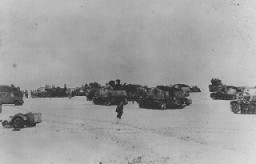
Barracks in the Ebelsberg camp for Jewish displaced persons. Ebelsberg, Austria, July 1947.
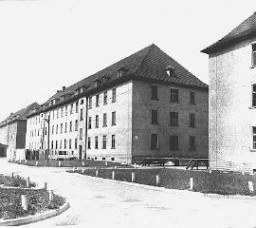
Eduard, Elisabeth, and Alexander Hornemann. The boys, victims of tuberculosis medical experiments at Neuengamme concentration camp, were murdered shortly before liberation. Elisabeth died of typhus in Auschwitz. The Netherlands, prewar.
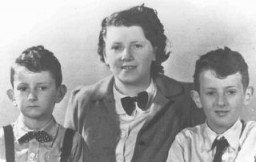
Defendant Adolf Eichmann stands as he is sentenced to death by the court. The execution of Eichmann remains the only time the State of Israel has enacted a death sentence. Jerusalem, Israel, December 15, 1961.
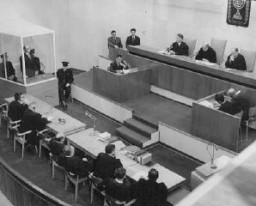
While on a tour of the newly liberated concentration camp, General Dwight Eisenhower and other high-ranking US Army officers view the bodies of prisoners who were killed during the evacuation of Ohrdruf. Ohrdruf, Germany April 12, 1945.
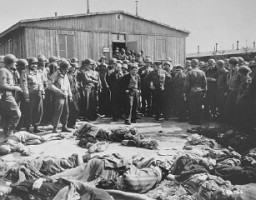
Generals Dwight D. Eisenhower and George S. Patton discuss Allied military operations in North Africa. Djebel Kouif, Algeria, March 16, 1943.
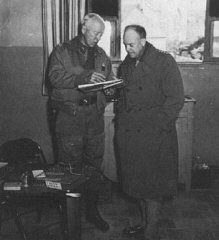
US General Dwight D. Eisenhower and General Troy Middleton, commanding general of the XVIII Corps, Third US Army, tour the newly liberated Ohrdruf concentration camp. Ohrdruf, Germany, April 12, 1945.
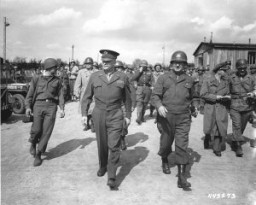
During an official tour of the newly liberated Ohrdruf concentration camp, an Austrian Jewish survivor describes to General Dwight Eisenhower and the members of his entourage the use of the gallows in the camp. Among those pictured is Jules Grad, correspondent for the US Army newspaper Stars and Stripes (on the right). Ohrdruf, Germany, April 12, 1945.
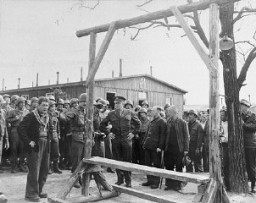
We would like to thank Crown Family Philanthropies, Abe and Ida Cooper Foundation, the Claims Conference, EVZ, and BMF for supporting the ongoing work to create content and resources for the Holocaust Encyclopedia. View the list of donor acknowledgement.